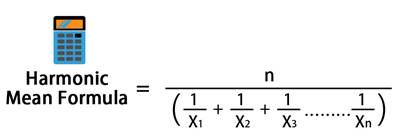
Table of Contents
Variability Meaning
As per the meaning of the variability term, it determines how these data points can differ from one another. Statisticians can utilize summary measures for determining the amount of spread or variability in a particular data set. The most popular measures of variability include -
- Range
- IQR (Interquartile Range)
- Variance
- Standard Deviation

So statistically speaking, the terms “variability”, “spread”, and “dispersion” are synonymous, each denoting how closely clustered or spread out a specific set of data is.
The Range
The range is defined as the difference between the largest and smallest values present in a given data set.
For instance, if we consider the numbers: 1, 2, 5, 6, 6, 8, 10, and 13, then the range would be 13 - 1, that’s 12.
The Interquartile Range (IQR)
The IQR refers to a measure of variability depending on dividing a set of values into quartiles. To better understand it, we can think of the median value that divides the dataset in half. Likewise, we can also divide the dataset into quarters.
Statisticians Call these quarters quartiles and use the denotations of Q1, Q2, and Q3 from low to high. That means, Q1 comprises the quarter having the smallest values, and Q4 is the dataset quarter having the highest values.
The interquartile range comprises 50% of the data points falling between Q1 to Q3. in other words, the IQR is the middle half of the data included between the lower and upper quartiles.
Talk to our investment specialist
Variance Formula
In a population estimate, the variance refers to the average squared deviation from the average population, also known as the population mean. The formula for calculating variance is:
σ2 = Σ ( Xi - μ )2 / N
where, σ2 denotes the population variance, Xi denotes the ith element from the estimated population, μ is the population mean, and N is the total number of elements present in the population.
Standard Deviation Formula
It is defined as the square root of the variance. Hence, the formula for the standard deviation of a population is:
σ = sqrt [ σ2 ] = sqrt [ Σ ( Xi - μ )2 / N ]
where the variables remain the same as mentioned in the previous formula for variance.
Significance of Variability
Analysts often use the mean to determine the center point of a process or a population. People tend to react to variability more than the mean, though it is equally relevant.
If a distribution has a lower variability, then the values present in that dataset are said to be more consistent. But when a distribution comes with a higher variability, then the data points become more dissimilar to each other, making the extreme values more prominent.
Understanding how variability works would certainly help you determine the chances or likelihood of unusual events. However, at times the extreme values can make us feel discomfort, in which cases the mean should be considered.
For example, if a weather report shows extreme doubt and heat conditions in one area, and at the same time flooding in another, it will make us feel uncomfortable. In such cases, meteorologists or other analysts need to show the average of all those extreme events.
Therefore, understanding a variability around the average or mean of all the values makes more sense, as it helps to gain critical information.
All efforts have been made to ensure the information provided here is accurate. However, no guarantees are made regarding correctness of data. Please verify with scheme information document before making any investment.












